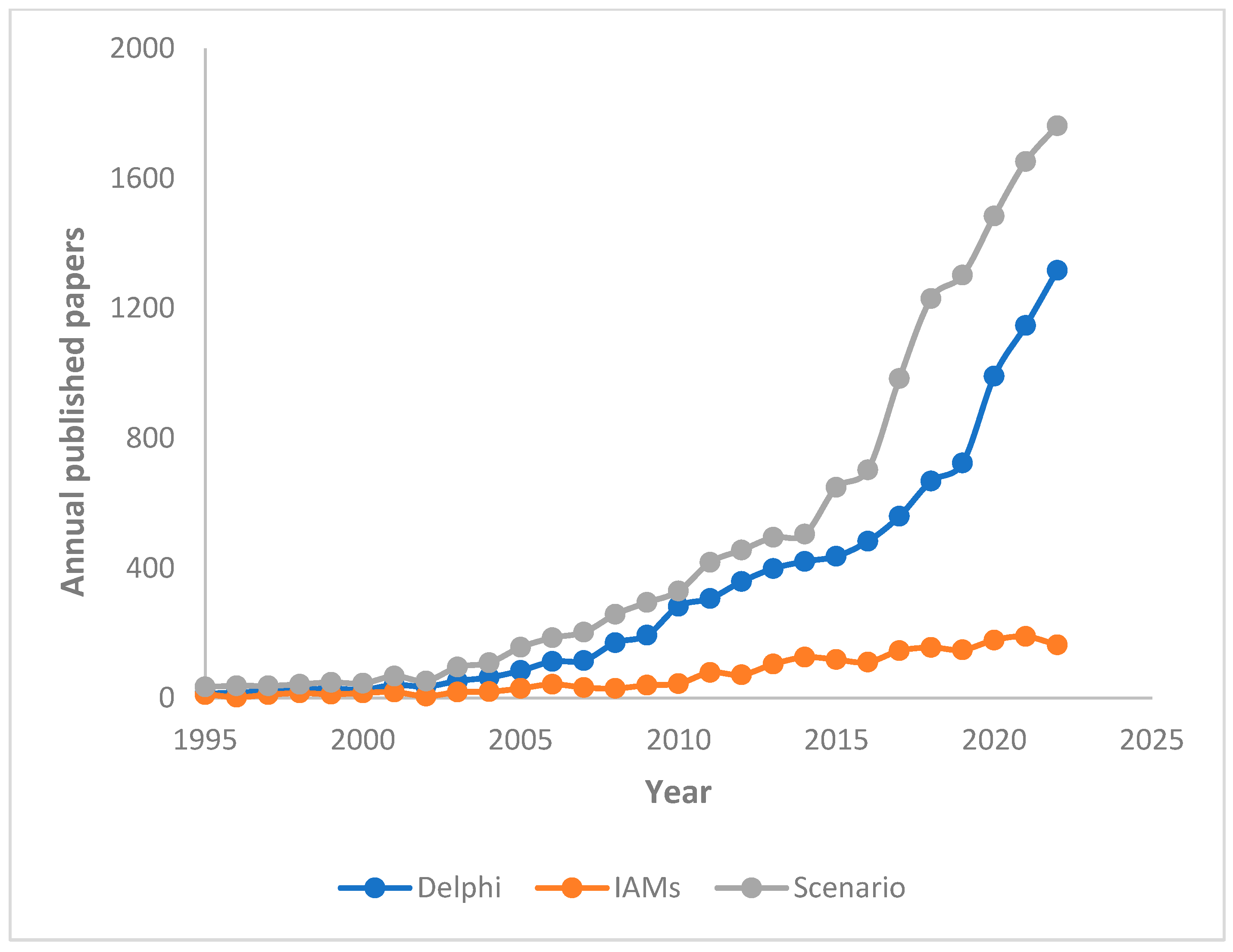Humans have always wanted to know what the future holds in store for them. In earlier centuries, people often sought clues to the future from sacred texts. Today, more secular approaches are increasingly used, although the older approaches to the future persist. Modern methods for prediction include trend extrapolation, the Delphi method, mathematical modeling, and scenario analysis, including backcasting. Extrapolation was only possible when reliable past data became available. The Delphi method relies on the judgement of experts in the subject matter. Mathematical modeling has been very successful in the physical sciences, and, in the form of integrated assessment models (IAMs), has been applied to problems such as assessing future energy use. Scenario analysis looks at a number of possible futures and develops internally consistent story lines around each. It is often used in conjunction with IAMs. Each of the four methods, including both their strengths and weaknesses, are discussed in turn. Finally, this entry looks at the future of prediction, and concludes that despite progress in each of the four approaches treated, predicting the future, never easy, is now harder than ever.
- Delphi method
- trend extrapolation
- future
- prediction methods assessment
- mathematical modeling
- scenarios
 Figure 1. Annual papers in the Scopus database with each of the terms ‘Delphi method’, ‘Integrated Assessment Models’, and ‘scenario analysis’ in the title, abstract or keywords, 1995–2022.
Figure 1. Annual papers in the Scopus database with each of the terms ‘Delphi method’, ‘Integrated Assessment Models’, and ‘scenario analysis’ in the title, abstract or keywords, 1995–2022.References
- Polak, F. The Image of the Future; Elsevier Scientific Publishing Company: London, UK, 1973.
- Toffler, A. Future Shock; Random House: New York, NY, USA, 1970.
- Naisbitt, J. Megtrends: Ten New Directions Transforming Our Lives; Warner Books: New York, NY, USA, 1984.
- Wikipedia. Predictions and claims for the Second Coming. 2022. Available online: https://en.wikipedia.org/wiki/Predictions_and_claims_for_the_Second_Coming (accessed on 11 March 2023).
- Leoni, E. Nostradamus and His Prophecies; Dover Publications: New York, NY, USA, 2000.
- Popkin, R.H. Predicting, prophesying, divining and foretelling from Nostradamus to Hume. Hist. Eur. Ideas 1984, 5, 117–135.
- Fast Company. Timeline of Failed Predictions (Part 1). 2010. Available online: https://www.fastcompany.com/1706712/timeline-failed-predictions-part-1 (accessed on 1 March 2023).
- Moriarty, P.; Honnery, D. Switching Off: Meeting Our Energy Needs in a Constrained Future; Springer Briefs on Energy; Springer: Berlin, Germany, 2022; p. 90. ISSN 2191-5520.
- Castle, J.L.; Hendry, D.F.; Martinez, A.B. Evaluating Forecasts, Narratives and Policy Using a Test of Invariance. Econometrics 2017, 5, 39.
- Granger, C.W.J.; Newbold, P. Some comments on the evaluation of economic forecasts. Appl. Econ. 1973, 5, 35–47.
- Hurley, K. A guide to evaluating forecasts. Bus. Econ. 1976, 11, 40–44. Available online: https://www.jstor.org/stable/23481497 (accessed on 24 March 2023).
- Makridakis, S.; Hyndman, R.J.; Petropoulos, F. Forecasting in social settings: The state of the art. Int. J. Forecast. 2019, 36, 15–28.
- Scoblic, J.P.; Tetlock, P.E. A better crystal ball: The right way to think about the future. Foreign Aff. 2020, 99, 10–18. Available online: https://www.foreignaffairs.com/articles/united-states/2020-10-13/better-crystal-ball (accessed on 24 March 2023).
- Molitor, G.T. From my perspective: Five economic activities likely to dominate the new millennium. VII: Principles and patterns of economic era development. Technol. Forecast. Soc. Chang. 2005, 72, 85–99.
